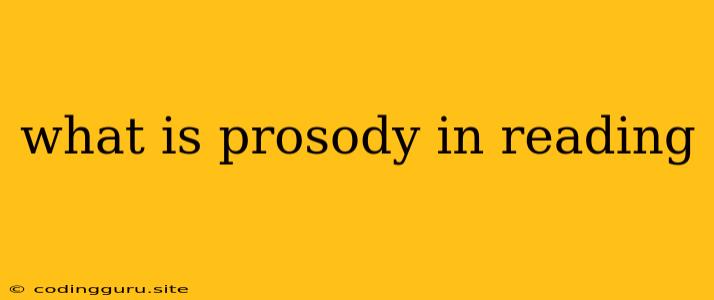What is Prosody in Reading?
Prosody in reading is a crucial element that elevates reading from simply decoding words to conveying meaning and engaging the listener. It encompasses all the elements that add life and expression to spoken language, making it a vital skill for both comprehension and communication. So, what is prosody in reading, exactly?
Understanding the Basics
Think of prosody as the soundtrack to your reading. It's the melody, rhythm, and emphasis that transforms a string of words into a compelling performance. Just like a musician interprets a musical score, a reader with strong prosodic skills uses their voice to bring the text to life.
Key Elements of Prosody
Several key elements contribute to effective prosody in reading:
-
Intonation: This refers to the rise and fall of your voice, like a wave, creating different tones to convey emotions, questions, statements, and emphasis. For example, a sentence ending with a question mark will naturally have a rising intonation, while a statement will end with a falling tone.
-
Stress: Certain words or syllables within a word are emphasized to highlight meaning and importance. Imagine saying the word "record" versus "record." The emphasis changes the meaning completely.
-
Pace: The speed at which you read influences the overall impact of your delivery. A slow pace might convey seriousness or suspense, while a faster pace could create excitement or urgency.
-
Pause: Strategic pauses between words or phrases provide natural breaks for comprehension and allow the reader to emphasize certain ideas or concepts.
-
Volume: Varying your volume can add drama and emphasize key points. A whisper can create suspense, while a louder voice can highlight a crucial moment.
Why is Prosody Important?
Understanding prosody in reading is crucial for several reasons:
-
Enhanced Comprehension: By adding the nuances of emotion and emphasis, prosody helps readers understand the author's intended meaning, even when the text is complex or nuanced.
-
Increased Engagement: Reading with prosody makes the text more interesting and engaging for the listener. Think about how much more enjoyable a story becomes when read with dramatic pauses, varied intonation, and appropriate pace.
-
Stronger Communication: Effective prosody helps readers communicate their understanding of the text and convey the author's message clearly and persuasively. This is especially important for public speaking or presentations.
Developing Strong Prosody
Building strong prosody skills requires practice and awareness:
-
Practice Reading Aloud: Regularly reading aloud to yourself or others will help you become more aware of the nuances of your voice and how they affect the meaning of the text.
-
Listen to Audiobooks: Pay attention to how professional narrators use their voices to convey emotions and meaning. Mimic their techniques to improve your own.
-
Record Yourself: Recording yourself reading can help you identify areas where your prosody needs improvement. Listen back and evaluate your intonation, pace, and emphasis.
-
Engage in Role-Playing: Acting out different characters and scenarios can help you explore various ways to use your voice to convey meaning.
-
Seek Feedback: Ask a trusted friend or teacher to provide feedback on your reading. Their observations can offer valuable insights into your strengths and areas for improvement.
Conclusion
Prosody in reading is an essential element that transforms simple decoding into a powerful and engaging experience. By understanding the key elements and practicing the techniques, you can develop your prosodic skills and become a more effective and engaging reader. Remember, your voice is your instrument, and with practice, you can master the art of reading with prosody!
